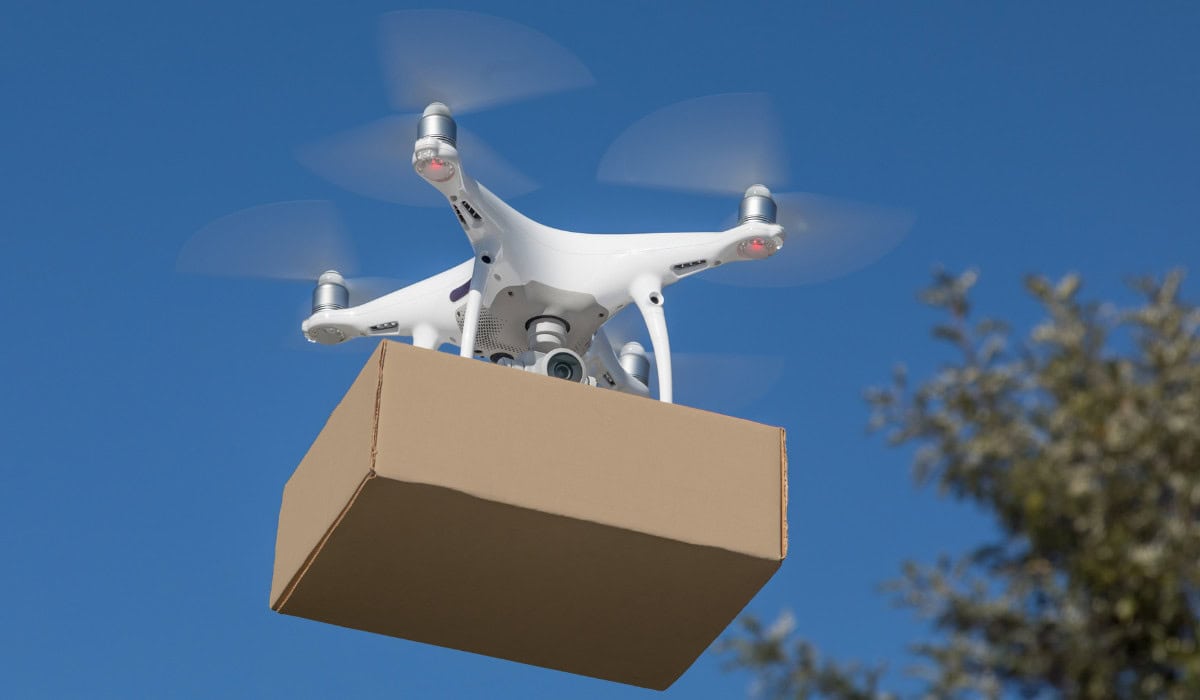
©Andy Dean Photography via Canva.com
Are Drones Almost Ready for Takeoff?
Amazon’s Prime Air drone program has been cleared by the Federal Aviation Administration (FAA) to fly devices beyond the visual line of sight, clearing a key regulatory hurdle to the e-commerce giant’s plans to expand the reach of its deliveries.
The long-awaited approval, which means pilots won’t need to be able to see the drones with their own eyes, will “allow Prime Air to further expand drone deliveries and lays the foundation to safely scale operations to more locations in the U.S.,” Amazon explained on its website.
Amazon said it has worked for years to develop and refine its “detect-and-avoid technology” to allow pilots to operate the drone remotely while avoiding any obstacles in the air. To obtain FAA approval, flight demonstrations were conducted for FAA inspectors “to show our system works in real-world scenarios.”
“We flew in the presence of real planes, helicopters, and a hot air balloon to demonstrate how the drone safely navigated away from each of them,” Amazon said.
The approval allows Amazon to “immediately” broaden its delivery area in College Station, Texas, one of the company’s initial test sites launched in 2022. It also clears the way for Amazon to launch drone deliveries to the West Valley of the Phoenix area in Arizona later this year.
Prime Air has struggled to get off the ground since Jeff Bezos first laid out his vision on “60 Minutes” for the service in 2014.
“Our vision has remained unchanged since we started working on Prime Air: to create a safe and scalable way to deliver packages to customers in 30 minutes or less using highly autonomous drones,” Amazon’s announcement last week read.
The company aims to use drones to deliver 500 million packages each year — a goal it hopes to reach by the end of the decade.
The FAA requires commercial drone operators to physically be able to see the drones as they operate them unless they have developed BVLOS (Beyond Visual Line of Sight) technology that ensures a remote pilot can operate the device safely. Other drone operators, including UPS, Wing, FedEx, and Zipline, have already received BVLOS clearance.
Many of the concerns about drone delivery from privacy advocates as well as some airplane and balloon pilots were laid out in a Bloomberg column in April entitled, “Amazon and Walmart Need to Give Up on Drones,” from columnist Leticia Miranda.
Beyond BVLOS prohibitions at the time, she cited the legal question of who owns the airspace over private properties. Noise complaints, challenges flying in bad weather, limits to package size, and the cost were also cited.
She pointed to a 2023 McKinsey study estimating that single-package drone delivery would have an operating cost of $13.50 due to high labor costs, as regulations in most countries and regions require people to only operate and monitor one drone at a time. However, the same study estimated that if drone operators can eventually manage 20 drones simultaneously, a single package delivery would cost about $1.50 to $2, which is lower than the per-package cost for an electric car delivering five packages.
Proponents predict advances in technology will help drone delivery make a leap forward this year. Last October, Amazon introduced a delivery drone, the MK30, that is smaller and quieter than prior models and can fly through light rain.
In Amazon’s 2023 shareholder letter, CEO Andy Jassy said that Prime Air is making “substantial progress” despite skeptics. He wrote, “Drones will eventually allow us to deliver packages to customers in less than an hour. It won’t start off being available for all sizes of packages and in all locations, but we believe it’ll be pervasive over time. Think about how the experience of ordering perishable items changes with sub-one-hour delivery?”
Discussion Questions
How confident are you that drone delivery will be sustainable and soon scale nationwide?
Do you see cost-effectiveness, consumer acceptance, safety, or another issue as the largest hurdle?
